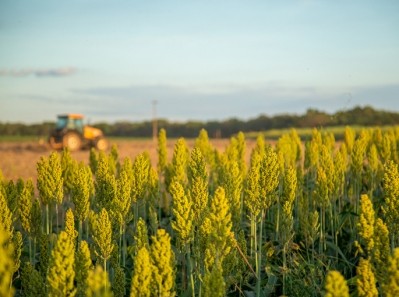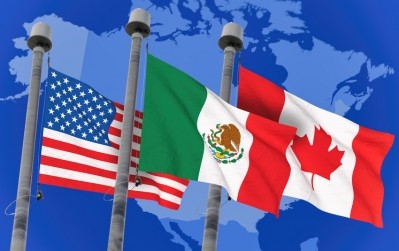Chinese buyers meet with US sorghum growers

An 11-member group of Chinese sorghum buyers, feed millers and importers are set to spend the next several days meeting with members of the production industry in the US along with sorghum producers, exporter and the Port of Huston, said the US Grains Council, which is helping host the visit.
The United Sorghum Checkoff Program, the Texas Grain Sorghum Association, the Kansas Grain Sorghum Commission and the Kansas Corn Commission also are involved in the visit, which runs through July 26.
The trip is a chance for sorghum buyers and importers to see the current feed grain crop in production and meet the farmers and producers involved, said Wayne Cleveland, executive director with the Texas Grain Sorghum Association.
“Our primary goal is to get them here and show them the crop – we know that customers want to see what they’re buying, and they want to see the quality,” he told FeedNavigator. “Getting them here and getting them the correct information – it’s important and encourages more trade than anything.”
The visit also gives producers a chance to speak with importers and address any questions or concerns they may have, he said.
“We want to know what has stopped them from buying US sorghum,” he added.
It is unclear at this time if ongoing concerns about trade retaliation or policy continue to dampen sales or if there are other questions, he said.
“Even with the 25% tariffs that came in July 6, [from] what we understand about their internal costs we should be very competitive,” he said of grain sales. “That makes think something else is going on – it’s crickets chirping.”
Trade dispute repercussions
During the 2016/17 marketing year, China was the largest importer of US sorghum, and purchased about 4.8m metric tons of the 6.04m metric tons exported, reported the US Grains Council. Mexico and Japan were the second and third largest markets accounting for about 568,000 metric tons and 183,000 metric tons, respectively.
Sales in recent months have faced several challenges, said Cleveland.
“We’ve been the point of the spear on the trade rhetoric,” he said. “We felt the repercussions early.”
A preliminary import duty of 178.6% was applied to US sorghum in April, as a penalty in an anti-dumping and countervailing duty investigation. However, that duty was removed in May.
“It’s complicated – that’s why we’re interested in seeing people here,” said Cleveland of the export market. “Is this all based on trade rhetoric or is there something else going on? With NAFTA and the situation that it’s in, we don’t know if we’ve become a political instrument – hopefully, they’ll let us know why.”
In addition to the downturn in sales to China, a recent sale of about 120,000 metric tons to Mexico fell through, he said. “Mexico pulled some exports – that was eye-opening,” he added.
“We see grains trading across the border, but for us, this is odd territory,” he said.
Previously, trade groups visiting have included people who may trade grain sorghum but have never seen it, or who have a specific reason to take part in a trade trip, said Cleveland. This year’s group, however, is comprised of “seasoned” buyers and transportation experts.
“They’ve bought amounts of grain sorghum from US producers,” he said. “This as a mature a group of end users that we’ve ever had.”
However, he said, the focus of the visit is expected to be on providing information and details of the current crop and the production system rather than on politics. “We’re always excited to have groups here regardless of what’s going on with trade,” he added.
“We want them to understand that there’s a reliable supply of high-quality grain available in the US – we want them to see it and our growers,” said Cleveland. “This trade will come and go. It’s part of who we are today, but we want them to know that we’re here and we’re working on higher quality, higher yields and that we’re the go-to supplier of grain sorghum in the US.”
Additionally, the visit gives the organizations involved the chance to talk about ongoing research to improve production of the feed crop, he said.
The sorghum crop currently in production has faced challenges from dry weather so yields are trending toward average or below, he said. “There are no odor issues or quality issues – it’s been a healthy crop – just yield drag associated with drought.”
“With the supply the way it is, you’d think the price would be higher than what it is,” he said. “But it’s still under corn, which is unusual for us.”










